Hardwood floors have a way of elevating a home’s character. They add warmth, elegance, and timeless beauty that carpets or tiles can rarely match. But with that beauty comes a certain responsibility — keeping them clean without ruining their finish. Anyone who has lived with hardwood knows the fear: a mop that’s too wet, a cleaner that’s too harsh, or a tool that scratches instead of shines can leave permanent scars. Unlike vinyl or laminate, hardwood isn’t very forgiving. The wrong cleaning method can strip away its protective coating, dull its natural luster, or even warp the boards.
At the same time, a simple sweep or vacuum isn’t always enough. Dust, grime, and hidden buildup eventually find their way into corners, seams, and high-traffic zones. That’s where deep cleaning comes in. Done correctly, it restores the floor’s glow and keeps it healthier for decades. Done carelessly, it can undo years of investment.
The challenge is that hardwood floors aren’t all created equal. A polyurethane-coated floor demands a different routine than one finished with natural oil or wax. Even the tools you choose — from microfiber pads to cleaning solutions — matter more than most people realize. And despite what you may have read on forums or quick DIY blogs, not every “natural” method is safe. Vinegar and water, for instance, are often recommended as an easy fix, but over time, that acidic solution can etch into the finish and leave the surface looking dull. Steam mops, another trendy option, can push moisture into the seams and cause warping.
So, how do you deep clean hardwood safely? The answer lies in balancing thoroughness with gentleness. You want to get rid of dirt, grime, and sticky spots while protecting the finish that shields the wood beneath. The key is preparation, product choice, and method.
In this guide, we’ll walk through the safest ways to deep clean hardwood floors without damaging the finish. You’ll learn how to identify your floor type, prep before cleaning, choose the right tools, and apply tried-and-tested methods trusted by professionals. We’ll also look at real-world product recommendations — the cleaners and tools homeowners actually swear by — so you can skip the trial-and-error. Finally, we’ll cover simple routines and preventative steps that keep your floors looking freshly polished without the constant stress of “am I damaging it?”
By the end, you’ll not only know how to deep clean hardwood the right way but also how to maintain that just-cleaned shine week after week, year after year — all while keeping the finish intact.
Understanding Hardwood Finishes
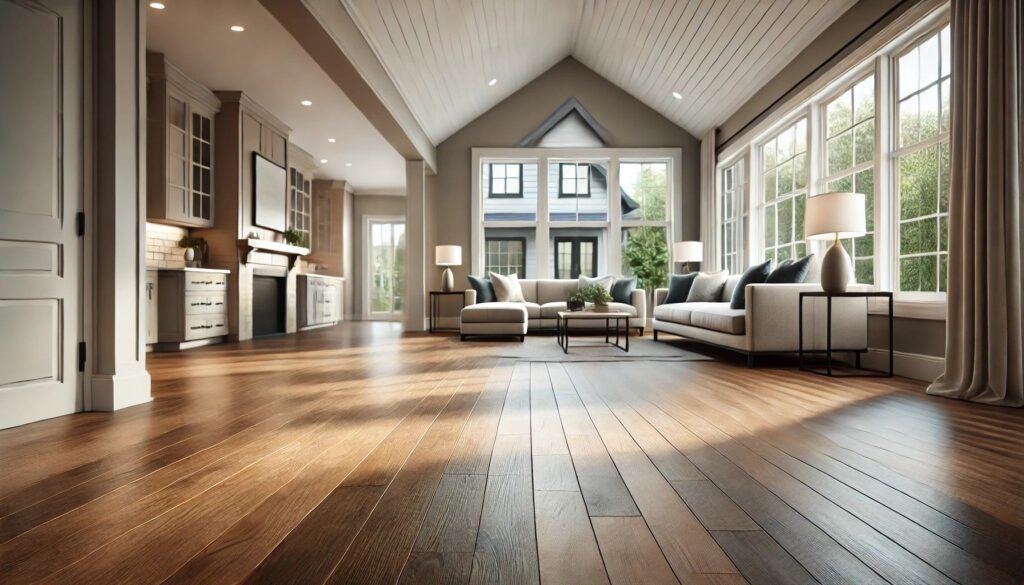
Before you even think about deep cleaning, you need to know what kind of finish protects your hardwood. The finish is essentially the shield between the raw wood and everything life throws at it — dirt, moisture, shoes, pet paws, and cleaning products. Using the wrong cleaning method can strip away that shield, exposing the bare wood underneath and making it far more vulnerable.
There are four main types of hardwood finishes you’re likely to encounter:
- Polyurethane (Surface Finish)
This is the most common finish in modern homes. It creates a durable, water-resistant layer that sits on top of the wood rather than soaking in. Polyurethane floors can handle gentle damp mopping with a wood-safe cleaner, making them easier to maintain. However, they should never be waxed or treated with oily soaps, as this can leave a cloudy residue. - Oil-Based Finish
Unlike polyurethane, oil finishes penetrate the wood, enhancing its natural look while providing moderate protection. They tend to give hardwood a rich, warm glow but require more maintenance over time. Cleaning must be done with products specifically designed for oil-finished wood. Harsh cleaners can dry it out, leaving the floor patchy and dull. - Wax Finish
Wax has been around for generations and is still used in some homes for its soft, matte sheen. It provides a traditional look but is less protective than modern finishes. Waxed floors are easily damaged by water and harsh chemicals. They should be cleaned with a barely damp cloth or a wax-safe solution, and occasionally re-waxed to restore their protective layer. - Unfinished or Bare Wood
If you’ve moved into an older house or a property with rustic styling, you might find bare wood floors without any finish. These are especially delicate because there’s no protective barrier. Deep cleaning unfinished wood should always be left to professionals — water and most cleaners will cause immediate damage.
How to Identify Your Floor’s Finish
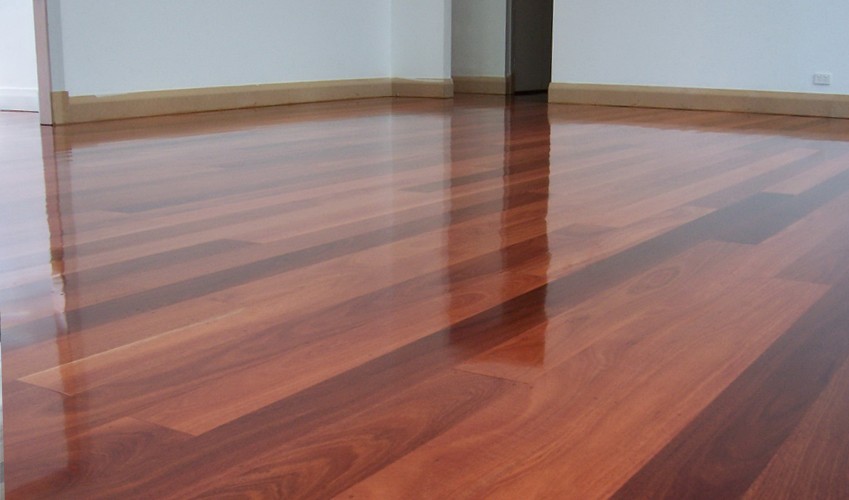
If you’re unsure what type you have, there are a few simple tests:
- Shine and Texture: Polyurethane tends to have a glossy, smooth surface, while oil and wax finishes look more matte and natural.
- Scratch Test: In an inconspicuous spot, lightly scratch the surface. If you see a clear layer before hitting wood, it’s likely polyurethane. If the wood itself changes appearance, it’s probably oil or wax.
- Water Test: Place a drop of water on the floor. If it beads up, the finish is intact (polyurethane). If it soaks in quickly, the finish is either oil, wax, or nonexistent.
Knowing your floor’s finish is the foundation of safe deep cleaning. Once you’ve identified it, you can move forward with methods that protect — not harm — your hardwood investment.
Pre-Clean Prep: Setting the Stage for a Safe Deep Clean
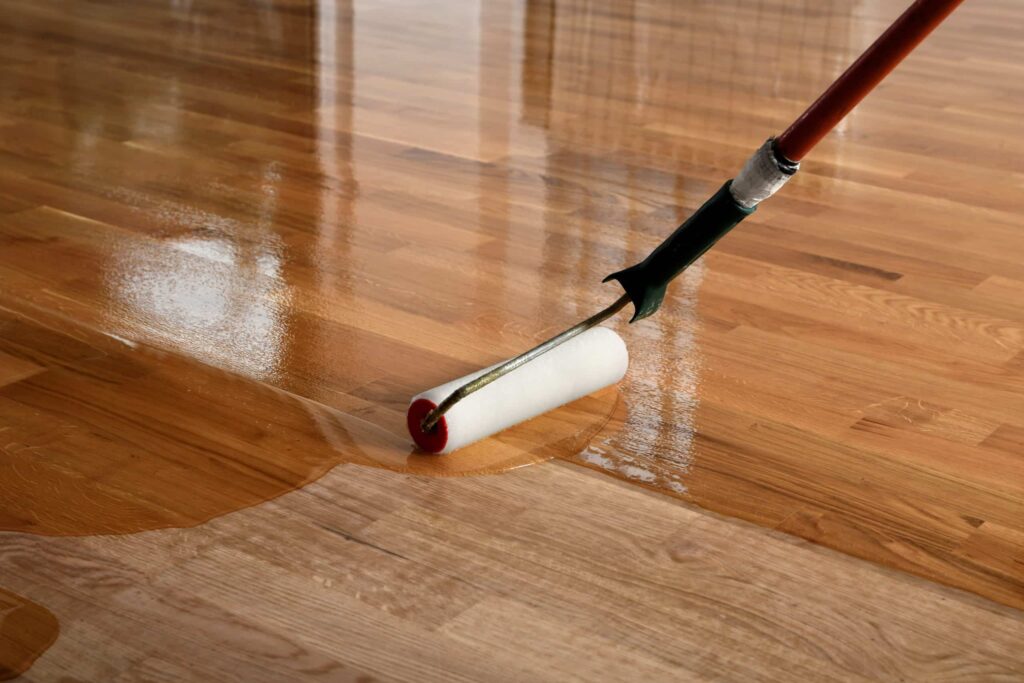
Deep cleaning hardwood floors isn’t something you can rush into. Skipping the prep stage is one of the most common mistakes homeowners make, and it almost always leads to small but lasting damage — scratches, streaks, or uneven shine. Think of this step as laying down the foundation: once the surface is cleared and protected, the actual cleaning becomes safer and more effective.
- Clear the Floor Area
Start by removing as much furniture and clutter as possible from the room. Heavy chairs, tables, and rugs left in place not only limit your reach but can also trap hidden dust and grit around their edges. When moving furniture, avoid dragging — even felt pads can sometimes catch grit and create scratches. Instead, lift where possible, or slide furniture slowly with soft blankets or sliders underneath. - Dust and Vacuum First
Dirt, grit, and tiny stones are hardwood’s worst enemies. If you deep clean without removing them, you’re basically scrubbing sandpaper across the surface. Begin with a thorough vacuum using a hardwood-safe setting or a canister vacuum with a soft brush head. Upright vacuums with beater bars should be avoided unless the bar can be completely turned off. For daily upkeep or quick passes, a microfiber dust mop is ideal. Its electrostatic fibers pick up fine dust better than traditional brooms, which tend to just push debris around. - Pay Attention to Corners and Baseboards
Hard-to-reach edges and corners often hide the most grime, and if left behind, it can spread once you apply a liquid cleaner. Use a handheld vacuum attachment or even a soft brush to loosen debris along the baseboards. A slightly damp microfiber cloth can also be run along edges to catch lingering dust. - Protect Adjacent Areas
If you’re working in a larger home, remember that cleaning solutions can sometimes splash or drift. Place towels or protective coverings near walls, carpet edges, or adjoining tile to keep moisture from spreading where it doesn’t belong. - Inspect the Floor for Problem Spots
Before applying any cleaner, take a few minutes to scan your floors for scratches, stains, or worn patches in the finish. Spot cleaning these areas first prevents them from worsening during the deep clean. For example, a sticky spill left untreated can smear across the surface, while a small scratch could collect excess cleaner and look darker than the rest of the floor.
By the time you finish these prep steps, your hardwood should already look noticeably cleaner — almost like a “reset” before the deeper process begins. More importantly, you’ll have minimized the risk of damage, ensuring that the next step — actual deep cleaning — enhances the finish instead of dulling it.
Safe Deep Cleaning Methods
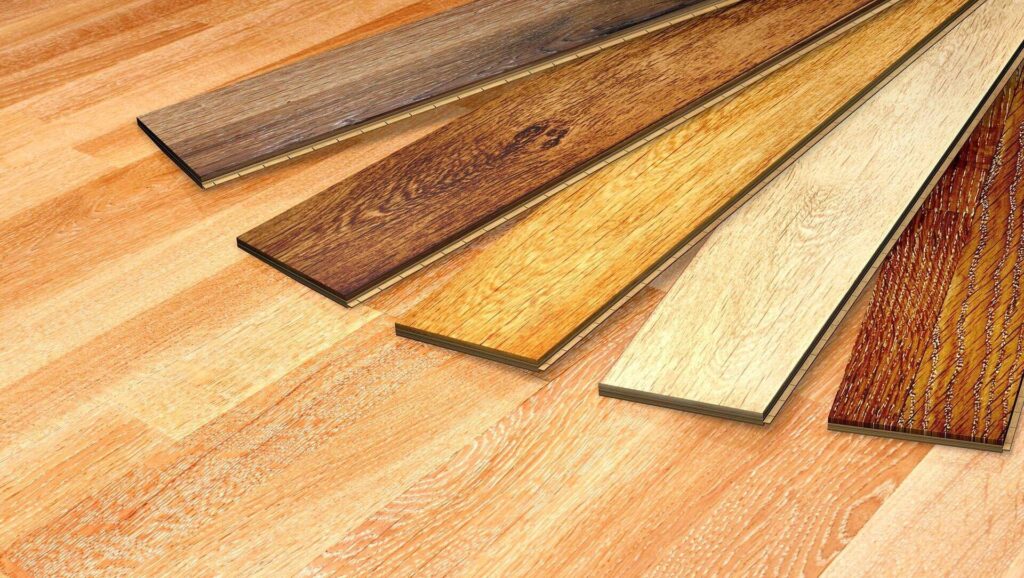
When it comes to hardwood, the rule of thumb is simple: be thorough but gentle. The goal is to remove dirt and restore shine without introducing too much water or harsh chemicals. Below are the safest deep cleaning approaches, each suited for different situations.
Method 1: Damp Mopping with a Hardwood-Safe Cleaner
This is the go-to method for most polyurethane-finished hardwood floors. The idea is not to soak the wood but to lightly clean the surface.
Step-by-Step:
- Choose a pH-balanced hardwood cleaner (avoid vinegar, bleach, or ammonia). Popular and trusted options include Bona Hardwood Floor Cleaner, Murphy Oil Soap (diluted properly), and Method Squirt + Mop Wood Floor Cleaner.
- Use a microfiber mop pad — they distribute liquid evenly and trap dirt rather than pushing it around.
- Lightly mist the cleaner onto the pad (never directly onto the floor).
- Mop in the direction of the wood grain, covering small sections at a time.
- Immediately follow with a dry microfiber cloth to absorb any remaining moisture.
What real users say: On Reddit’s r/HomeImprovement, many homeowners warn that using vinegar made their polyurethane floors lose shine within a year. By contrast, those using Bona reported long-term gloss with no cloudiness.
Method 2: Spot Cleaning Stubborn Stains
Sometimes, spills and marks don’t lift with regular mopping. This is where spot cleaning comes in.
Common stains & solutions:
- Sticky food or drink spills: Spray a hardwood-safe cleaner directly on the spot, let it sit for 1–2 minutes, then gently wipe with microfiber.
- Pet accidents: Use an enzymatic cleaner labeled safe for wood, like Nature’s Miracle Hard Floor Cleaner, to remove odor and bacteria.
- Scuff marks from shoes: Rub gently with a damp cloth dipped in baking soda solution, then wipe dry.
What to avoid: Magic Erasers and abrasive pads. Many homeowners on Amazon reviews complained they dulled their finish permanently.
Method 3: Refreshing High-Traffic Areas
Over time, hallways, kitchens, and entryways lose their luster faster than other spots. Instead of refinishing, you can refresh the finish safely.
Steps:
- Clean the area thoroughly using Method 1.
- Apply a product like Rejuvenate Professional Wood Floor Restorer or Bona Hardwood Floor Polish.
- Spread evenly with a microfiber applicator, working in thin coats.
- Let dry completely before walking on it (usually 30–45 minutes).
User insight: Many reviewers praise these products for bringing “like-new shine” without sanding, but they also stress applying very thin coats to avoid streaks.
Method 4: Gentle Deep Scrub (For Heavier Buildup)
If your hardwood looks dull despite regular care, it may have built-up grime that needs a slightly deeper clean.
Tools: A hardwood floor cleaning machine like the Bona PowerPlus Motion Mop or Oreck Orbiter Cleaner.
Steps:
- Attach a microfiber or soft scrub pad (never abrasive).
- Apply a small amount of hardwood-safe cleaner.
- Run the machine slowly across sections of the floor, letting the pad lift embedded dirt.
- Wipe dry immediately with clean microfiber.
Warning: Avoid steam cleaners at all costs. Steam forces moisture into seams and can permanently warp boards. Dozens of homeowners on flooring forums regret trying them after seeing bubbling and cupping within weeks.
Method 5: Seasonal Deep Conditioning (Optional)
For oil-finished or waxed floors, consider conditioning every 6–12 months. Use products like Osmo Polyx-Oil or a natural beeswax-based conditioner. This nourishes the wood and keeps it from drying out.
Important: Never apply these on polyurethane floors — they’ll just sit on the surface and create a sticky film.
Quick Recap — What Works vs. What to Avoid
Safe methods:
- Damp mop with hardwood cleaner
- Spot clean with wood-safe solutions
- Use restorative polishes for shine
- Microfiber mop pads and applicators
Avoid:
- Vinegar and acidic DIY mixes
- Steam cleaners or wet mopping
- Abrasive scrubbing pads
- Oily soaps on polyurethane floors
Pro Tip from Homeowners: One Redditor put it perfectly: “Hardwood floors don’t like experiments. Stick to the cleaners made for them, and they’ll outlast you.”
Products & Tools Professionals Recommend
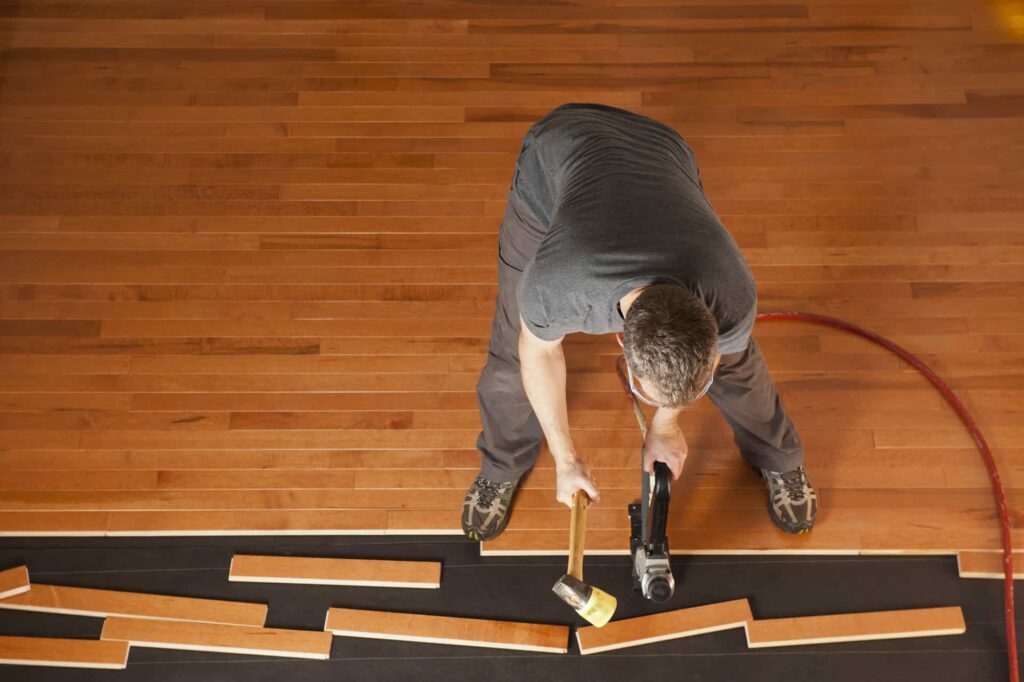
The truth about hardwood care is this: not all “cleaners” and “mops” on the store shelf are safe. Some are too harsh, others leave residues, and a few can quietly strip away your floor’s finish over time. Professional cleaners and flooring installers often recommend sticking to tried-and-tested tools and solutions that are specifically designed for hardwood. Here are the standouts, backed by both expert advice and thousands of homeowner reviews.
1. Hardwood Floor Cleaners
- Bona Hardwood Floor Cleaner
Considered the gold standard for polyurethane-finished floors. It’s pH-balanced, residue-free, and safe for frequent use. Reviewers on Amazon highlight its consistency — “works just as well five years later as the first time.” Pros also like that it comes in spray bottles and refill jugs, making it versatile. - Murphy Oil Soap (Diluted Properly)
A classic option that works well when diluted correctly. Homeowners love the natural smell and the gentle shine it leaves. The downside? Overuse can leave a slight film, so it’s best for occasional cleaning rather than weekly mopping. - Method Squirt + Mop Wood Floor Cleaner
Popular for its eco-friendly formula and fresh scent. Many users in eco-conscious forums mention it’s a safe choice for households with kids and pets. It doesn’t deliver a high-gloss finish, but it leaves floors clean and streak-free.
2. Spot-Cleaning Solutions
- Nature’s Miracle Hard Floor Cleaner
Especially recommended for pet owners. It neutralizes odors while lifting stains, something standard wood cleaners don’t always handle. Dog and cat owners on Reddit swear by it for dealing with accidents without harming their finish. - Weiman Hardwood Floor Cleaner Wipes
Handy for quick spot treatments. Pros often use these in model homes or real estate staging when only small areas need refreshing before viewings.
3. Restorers and Polishes
- Rejuvenate Professional Wood Floor Restorer
Known for its ability to bring dull floors back to life. Homeowners describe it as “a facelift in a bottle.” The catch? It requires careful application in thin layers; otherwise, streaks may appear. - Bona Hardwood Floor Polish
Offers a similar shine boost but in a less glossy finish. It’s great for people who prefer a more natural look while still adding a protective layer.
4. Tools That Make a Difference
- Microfiber Mop Systems (e.g., Bona Premium Spray Mop)
Microfiber pads trap dust and spread cleaner evenly without leaving puddles. Professionals emphasize microfiber over cotton mops, which can push dirt around and hold too much water. - Vacuum with Hardwood Setting (Shark, Miele, Dyson models)
Look for vacuums with a “hard floor” mode or a soft brush roller. Users consistently warn against vacuums with stiff beater bars, which can scratch finishes. - Oreck Orbiter or Bona PowerPlus Machines
These floor machines provide a professional-level deep clean without abrasives. They’re often used by cleaning services but are compact enough for home use. Many DIY homeowners say they “paid for themselves” after avoiding a professional cleaning service.
5. Products and Tools to Avoid
- Steam Mops – Flooring forums are full of cautionary tales: swelling boards, bubbling finishes, and irreversible warping. Professionals unanimously advise against them.
- Vinegar/Ammonia Cleaners – Though they sound natural, they’re acidic and slowly erode finishes. Homeowners often only notice the damage after a year or two when floors look dull and patchy.
- Oil-Soaps on Polyurethane Floors – These leave behind a slick residue and make refinishing harder later.
Quick Takeaway
If you stick to pH-balanced cleaners, microfiber mops, and restorative polishes, you’ll have the same tools flooring pros rely on. Skip the DIY shortcuts — while they seem cheaper at first, they often lead to costly refinishing jobs later.
As one flooring contractor shared on a homeowner forum: “I’ve made more money fixing vinegar damage than installing new floors.” A cautionary but valuable reminder to choose products with your floor’s long-term health in mind.
Maintenance Tips to Prevent Damage
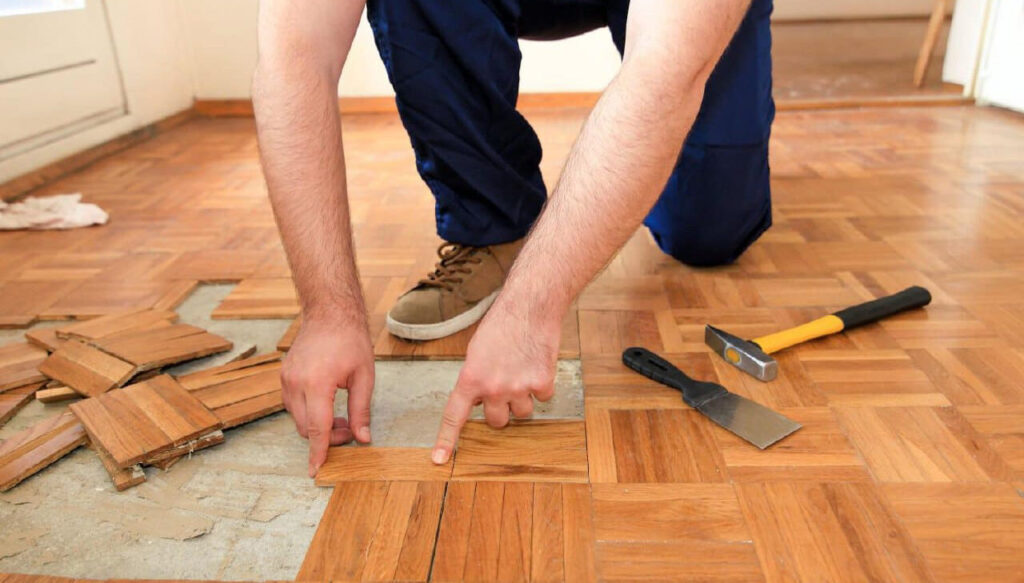
Deep cleaning your hardwood floors once in a while is important, but what really keeps them looking new is the everyday and seasonal care in between. Hardwood isn’t high-maintenance if you treat it consistently and prevent problems before they build up. These habits will extend the life of both your wood and its finish.
1. Establish a Weekly Routine
- Dust or vacuum regularly: Use a microfiber dust mop or a vacuum with a soft-brush hardwood setting at least twice a week (daily if you have pets). Dust and grit act like sandpaper, scratching the surface over time.
- Spot clean immediately: Spills, sticky messes, or pet accidents should be cleaned as soon as they happen. Leaving them for later risks stains and dull spots.
2. Monthly Deep Refresh
- Give high-traffic areas (kitchens, hallways, entryways) a more thorough damp mop with a hardwood-safe cleaner once a month.
- Rotate area rugs to prevent uneven fading or wear.
- Check felt pads under chairs and furniture — replace them if they’re worn down, as old pads can collect grit and cause scratches.
3. Seasonal Maintenance (Every 3–6 Months)
- Polish or restore shine: Use a product like Bona Hardwood Polish or Rejuvenate to refresh the finish in high-traffic zones. Always apply thin coats and allow full drying time.
- Check humidity levels: Hardwood expands in high humidity and shrinks in low humidity, which can lead to gaps or warping. Keep indoor humidity between 35–55% with a humidifier or dehumidifier as needed.
4. Long-Term Protective Habits
- Adopt a “no shoes indoors” policy. Grit and small stones carried inside are a leading cause of scratches. If shoes must stay on, place mats at every entry point.
- Use breathable rugs. Choose rugs with non-slip pads designed for hardwood. Avoid rubber or latex backings, which can discolor finishes.
- Protect from sunlight. UV rays can fade hardwood unevenly. Curtains, blinds, or UV-filtering window films can help maintain an even tone.
- Trim pet nails. Dogs and cats can leave surface scratches, especially in softer woods like pine. Regular grooming reduces damage.
5. Know When to Call a Professional
Even with perfect care, hardwood may eventually need professional attention. If you notice deep scratches, peeling finishes, or dullness that no cleaner restores, it may be time for professional buffing or refinishing. The good news is, with consistent maintenance, this could be decades away.
Pro insight: Flooring installers often say that hardwood floors don’t “wear out” — they just get neglected. With these habits in place, your floors will keep their natural warmth and shine for years without the stress of costly repairs.
Comparison of Hardwood Deep Cleaning Methods
| Method | Effectiveness | Time Required | Cost Level | Risk of Damage | Best For |
| Damp Mop w/ Hardwood Cleaner | High | 20–40 min | Low | Very Low | Routine deep cleaning of polyurethane floors |
| Spot Cleaning (Stains/Spills) | Medium–High | 5–15 min | Low | Low | Pet accidents, sticky messes, scuff marks |
| Restorers/Polishes (Bona, Rejuvenate) | High | 30–60 min | Medium | Moderate (if over-applied) | Refreshing shine in high-traffic areas |
| Gentle Machine Scrub (Bona/Oreck) | Very High | 60–90 min | Medium–High | Low–Moderate | Floors with heavy buildup or dullness |
| Oil/Wax Conditioning | Medium | 60+ min | Medium | Moderate (if misapplied) | Oil or wax-finished hardwood (not polyurethane) |
| Steam Cleaning (NOT RECOMMENDED) | Initially High | 20–30 min | Low–Medium | Very High | Should be avoided – risks warping and finish damage |
Quick takeaway: For most homeowners, a damp mop with hardwood cleaner plus occasional polish gives the best balance of cleanliness, shine, and safety. Machines are great for heavy buildup, while oil/wax conditioning applies only to specific finishes.
Buying Guide: Choosing the Right Products for Hardwood
The cleaning aisle is full of sprays, soaps, and gadgets that promise spotless wood floors. But not all of them are safe for hardwood — some can quietly strip away finish, leave residues, or even cause long-term damage. A smart buying decision can save you hundreds in refinishing costs later. Here’s what to look for and what to avoid.
1. Hardwood-Specific Cleaners
Always choose a product that is labeled safe for hardwood floors. These cleaners are usually pH-balanced, meaning they clean without being too acidic or alkaline.
- Look for brands like Bona, Method, or Weiman, which are trusted by professionals and have been tested for years.
- Avoid all-purpose cleaners, bleach, or ammonia-based products. These are designed for tiles and bathrooms, not wood.
2. Mop Systems and Pads
- Microfiber is king. It traps dirt and dust effectively without scratching. Cotton string mops tend to hold too much water, increasing the risk of damage.
- A spray mop system (like the Bona Premium Spray Mop) gives better control of moisture and prevents over-wetting.
- Replace pads regularly. A worn-out pad can grind grit into the finish, acting like sandpaper.
3. Restorers and Polishes
If your floor looks dull but isn’t damaged, a restorer can make it glow again.
- Go for low-build products like Bona Polish or Rejuvenate. They leave a thin protective coat without excessive buildup.
- Be cautious with “high gloss” promises. Too many layers of polish can create a plastic-like look or trap dirt. Thin, even coats are best.
4. Vacuum Cleaners
- Pick a vacuum with a dedicated hard floor mode or a soft roller brush (many Shark and Dyson models have this feature).
- Avoid vacuums with stiff beater bars that can scratch the surface.
- Lightweight canisters are easier to maneuver and less likely to leave scuff marks.
5. Tools to Skip
- Steam Mops: Marketed as eco-friendly, but they force moisture into wood seams, often causing swelling and warping.
- DIY Vinegar Mixes: While cheap, vinegar eats away at finish over time, leaving dull patches.
- Oil Soaps on Polyurethane Floors: They create a slippery film that makes refinishing harder down the line.
6. Bonus Accessories
- Felt Pads: Stick them under every chair and table leg. Replace when worn.
- Breathable Rug Pads: Prevent slipping without trapping moisture.
- Humidity Control: A small humidifier/dehumidifier can be the best “tool” for preventing wood expansion or shrinkage.
Bottom line: If the label doesn’t say “hardwood safe,” skip it. Spending a little more on trusted cleaners and microfiber tools saves you from expensive sanding or refinishing later.
FAQs: Deep Cleaning Hardwood Without Damaging Finish
- Can I use vinegar and water to clean hardwood floors?
It’s a common DIY tip, but vinegar is acidic. Over time, it can dull and etch the protective finish, especially on polyurethane-coated floors. While it may look fine at first, many homeowners report their floors losing shine within a year or two. Stick with pH-balanced cleaners made specifically for hardwood. - Are steam mops safe for hardwood?
No. Steam mops may give a quick shine, but they force hot moisture into seams and joints. This can cause boards to swell, warp, or even separate. Once water gets beneath the finish, damage is irreversible without sanding and refinishing. Professionals and manufacturers both recommend avoiding steam. - How often should I deep clean hardwood floors?
For most households, a full deep clean with a hardwood-safe cleaner is best once a month. Daily dusting or vacuuming prevents grit from scratching, and spot cleaning handles spills in between. If you have pets, kids, or high-traffic zones, you may need light damp mopping every 1–2 weeks. - What’s the difference between cleaning and polishing?
- Cleaning removes dirt, dust, and grime. It should be done frequently.
- Polishing or restoring adds a thin protective layer on top of the finish to refresh shine and smooth small scratches. This should be done every 3–6 months, depending on wear. Too much polish can create buildup, so moderation is key.
- How do I restore shine to dull hardwood floors?
If regular cleaning doesn’t bring back shine, use a restorer or polish designed for hardwood, such as Bona Hardwood Floor Polish or Rejuvenate Restorer. Apply thin coats with a microfiber applicator and allow full drying before walking on the floor. For severely dull floors, a professional buff-and-coat may be necessary. - Can I use a regular vacuum on hardwood?
Yes, but only if it has a hard floor mode or a soft brush attachment. Upright vacuums with beater bars are too aggressive and can leave fine scratches. Many homeowners switch to canister vacuums or stick vacuums designed specifically for hardwood. - What’s the safest way to clean up pet accidents?
Blot up as much moisture as possible immediately, then clean with an enzymatic cleaner safe for wood (like Nature’s Miracle Hard Floor Cleaner). Avoid soaking the area, and dry it thoroughly afterward to prevent moisture from seeping into seams. - How long do hardwood floors last if properly cared for?
With consistent maintenance and safe cleaning methods, hardwood floors can last 50 years or more without needing a full refinish. Some oak and maple floors in older homes are still strong and beautiful today because of careful upkeep.
Pro tip: Always test new products in a hidden corner before applying them across the whole floor. What’s safe for one finish may not be right for another.
Consumer Decision-Making Guide
Hardwood floors are an investment — one that pays back in beauty, comfort, and long-term value when properly cared for. But with so many cleaners, tools, and “quick hacks” out there, it’s easy to feel overwhelmed or make the wrong choice. The safest path is to think of your hardwood not as a chore, but as a living surface that needs balance: enough cleaning to stay fresh, but never so much water or harshness that the finish is compromised.
When deciding how to deep clean:
- Start with your finish type. Polyurethane, oil, or wax all require slightly different approaches. If in doubt, treat it as polyurethane — the most common — and stick with hardwood-safe cleaners.
- Choose quality over shortcuts. Products like Bona, Rejuvenate, or Method may cost more than vinegar or a steam mop, but they preserve your floors for decades instead of causing hidden damage.
- Match frequency to lifestyle. Households with pets or kids may need monthly deep cleans and frequent spot checks. Lower-traffic homes can go longer between refreshes.
Ultimately, the decision is about protecting your investment. A little extra care now saves you from costly refinishing later — and keeps your hardwood floors glowing as the heart of your home.



